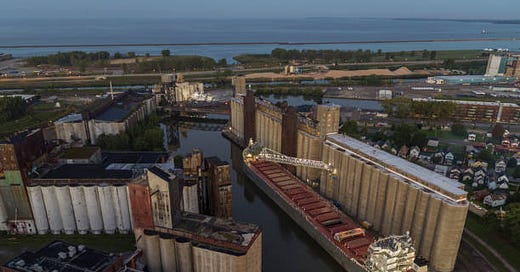I'm Not An Urbanist. I'm An Urban Sociologist.
There’s a difference. And it shapes how I view the future of cities.
A commercial ship unloads on the Buffalo River, in Buffalo, NY. Source: gettyimages.com
I’ve written a lot about how growing up in Detroit was instrumental in my desire to improve and revitalize cities. Watching a city being hollowed out and disgraced in the ‘70s and ‘80s can have that impact. Yet, ever since I can remember I’ve always felt slightly out …
Keep reading with a 7-day free trial
Subscribe to The Corner Side Yard to keep reading this post and get 7 days of free access to the full post archives.



